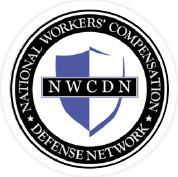Cell Tower Deaths Lead To New Reg Priority As OSHA Pushes Issue With Stakeholders
| OSHA continues to hone its enforcement and regulatory emphasis on fatalities and severe injuries in communication tower building and maintenance, with Deputy Assistant Secretary Jordan Barab on Tuesday saying the agency has observed “an alarming increase” in fatalities in the fast-growing industry and assuring safety advocates that OSHA has become deeply engaged in the issue.Agency officials are currently seeking public input on a wide-ranging request for information (RFI) about what potential standards OSHA might pursue that address cellular tower safety concerns (see related story). OSHA also has formed partnerships with industry and the Federal Communications Commission — the chief regulator of communication towers — to develop safety programs to protect workers, especially from deadly falls (see related story).
Barab said during a Workers Memorial Day commemoration at the Labor Department that with continuously improving technology, the country is seeing a rapid increase in the number of cell towers going up, and that increases the attendant risk. “We certainly understand the importance of this industry, but we don’t think that workers’ lives should be sacrificed for the sake of a better cell signal,” he said. OSHA has previously noted that in order to erect or maintain communication towers, employees regularly climb heights from 100 to 2,000 feet, and has cited the risk of falls, structural collapses, electrical hazards, and hazards associated with inclement weather. The agency recorded 13 communication tower worker deaths in 2013 — the deadliest year for those workers since 2006 — and last year, 12 workers were killed, double the number of deaths in 2011 and six times the total number in 2012, according to OSHA. OSHA officials appear confident in eventually crafting a rule specific to cell tower safety, having already launched the effort through the tentative move of issuing an RFI earlier this year. “This is the first step in what will likely become a regulation” that protects communication tower workers, Barab said. Regulators are seeking information from tower workers, wireless carriers, engineering and construction management firms, tower owners, and tower construction and maintenance companies about the causes of employee injuries and fatalities, and to share “best practices” used by workers and employers in the industry to address hazards. The Workers Memorial Day presentation at DOL included Kathy Pierce, the mother of a communications tower worker named Chad Weller, who died from a fall while working on a cell tower. She decried what she said was OSHA’s low fine of $4,750 following the accident, and also that the company involved was trying to negotiate a reduced figure. Also Pierce criticized a culture of long work days for tower workers, which she says leads to exhaustion and in turn a hazard. OSHA’s communication tower RFI has generated more than two dozen responses from stakeholders, many with suggestions about what OSHA should include in a potential rule as specific safety requirements. For example, one respondent, a tower manufacturer, indicated that internal climbing ladders are preferable to step bolts, and not much more expensive; and that platforms should be required at every antenna level. “The single most effective way to reduce accidents on towers is to enforce the requirement that the owners provide workers with a safe workplace. Many of the towers we climb on today are death-traps,” the respondent said. “Dozens have died when they were hooked off to a step bolt while working and their hook slips over the end.” “The cellular mounts that support the cellular antennas are, without a doubt, designed by someone that has never climbed on a tower in their life or been involved in construction in any way. There should be a mandatory work platform at every antenna level, and the antenna needs to attach to the platform handrail,” the stakeholder said. “The workers need access to service these antennas and no man should have to hang underneath an antenna, 300′ in the air, to hook up or service antennas.” Not all of those commenting seemed to agree with the notion that cell tower accidents are predominantly the employer’s fault, with one representative from a telecom firm saying “personal accountability” by tower workers must be a central part of avoiding cell tower injuries and deaths. “When you look at the cause of many deaths from falls, it points directly at the individual free climbing and not being 100% tied off. The decision to ignore safety measures in the name of speed is the (individual’s) sole decision. I have never heard of a technician being fired or disciplined because they took longer to do the job safely,” according to the comment, which pointed to a key role for employers as well. “Companies from the provider to the subcontractor need to be on the same page when it comes to safety practices. They need to encourage all workers to think ‘safety first’ and give them the time to utilize the proper safety measures,” the stakeholder said. “As for accountability, the only way to enforce the compliance of safety policies is to observe, educate, and fine if applicable. In order for OSHA to do this, they would have to employ experienced safety auditors or subcontract to companies that can provide this service. Inherently employees will begin taking safety shortcuts to increase their productivity until it becomes more of a habit than a time saving tactic.” — Christopher Cole () |

